#women of science
Text
I couldn’t put a finger on it but Dr. Anna Ripley reminds me a lot of Doctor Aphra.
#idk if it’s just appearance orrr#the fact that they’re both geniuses#women of science#or the fact their names both start with ‘A’#idk idk#anna ripley#dr anna ripley#anna ripley tlovm#vox machina#tlovm#doctor aphra#star wars
4 notes
·
View notes
Video
youtube
I highly recommend this video & Lucy Cooke’s latest book: BITCH - On The Female of The Species.
#women of science#zooogy#studying female animal behavior#Darwin + The Victorian Age#Darwin didn't understand females
1 note
·
View note
Text

#lgbtq+#gay#lesbian#bisexual#trans#queer#trans men#trans women#non binary#pansexual#asexual#pride#pride month#transgender#transfem#nonbinary#trans joy#trans community#trans beauty#information#learning#fyi#history#nature#science#the more you know
2K notes
·
View notes
Text

LaRue Burbank, mathematician and computer, is just one of the many women who were instrumental to NASA missions.
4 Little Known Women Who Made Huge Contributions to NASA
Women have always played a significant role at NASA and its predecessor NACA, although for much of the agency’s history, they received neither the praise nor recognition that their contributions deserved. To celebrate Women’s History Month – and properly highlight some of the little-known women-led accomplishments of NASA’s early history – our archivists gathered the stories of four women whose work was critical to NASA’s success and paved the way for future generations.
LaRue Burbank: One of the Women Who Helped Land a Man on the Moon
LaRue Burbank was a trailblazing mathematician at NASA. Hired in 1954 at Langley Memorial Aeronautical Laboratory (now NASA’s Langley Research Center), she, like many other young women at NACA, the predecessor to NASA, had a bachelor's degree in mathematics. But unlike most, she also had a physics degree. For the next four years, she worked as a "human computer," conducting complex data analyses for engineers using calculators, slide rules, and other instruments. After NASA's founding, she continued this vital work for Project Mercury.
In 1962, she transferred to the newly established Manned Spacecraft Center (now NASA’s Johnson Space Center) in Houston, becoming one of the few female professionals and managers there. Her expertise in electronics engineering led her to develop critical display systems used by flight controllers in Mission Control to monitor spacecraft during missions. Her work on the Apollo missions was vital to achieving President Kennedy's goal of landing a man on the Moon.
Eilene Galloway: How NASA became… NASA
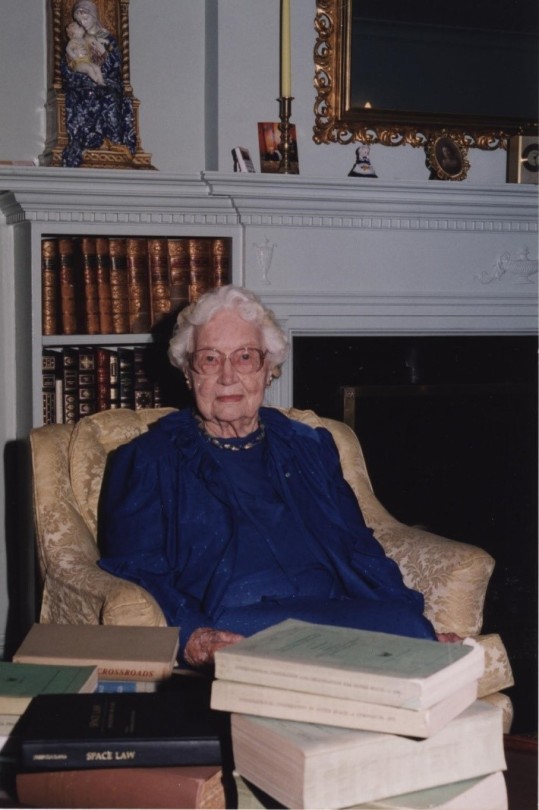
Eilene Galloway wasn't a NASA employee, but she played a huge role in its very creation. In 1957, after the Soviet Union launched Sputnik, Senator Richard Russell Jr. called on Galloway, an expert on the Atomic Energy Act, to write a report on the U.S. response to the space race. Initially, legislators aimed to essentially re-write the Atomic Energy Act to handle the U.S. space goals. However, Galloway argued that the existing military framework wouldn't suffice – a new agency was needed to oversee both military and civilian aspects of space exploration. This included not just defense, but also meteorology, communications, and international cooperation.
Her work on the National Aeronautics and Space Act ensured NASA had the power to accomplish all these goals, without limitations from the Department of Defense or restrictions on international agreements. Galloway is even to thank for the name "National Aeronautics and Space Administration", as initially NASA was to be called “National Aeronautics and Space Agency” which was deemed to not carry enough weight and status for the wide-ranging role that NASA was to fill.
Barbara Scott: The “Star Trek Nerd” Who Led Our Understanding of the Stars
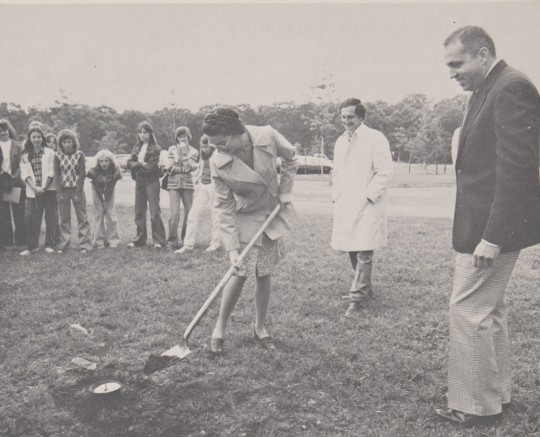
A self-described "Star Trek nerd," Barbara Scott's passion for space wasn't steered toward engineering by her guidance counselor. But that didn't stop her! Fueled by her love of math and computer science, she landed at Goddard Spaceflight Center in 1977. One of the first women working on flight software, Barbara's coding skills became instrumental on missions like the International Ultraviolet Explorer (IUE) and the Thermal Canister Experiment on the Space Shuttle's STS-3. For the final decade of her impressive career, Scott managed the flight software for the iconic Hubble Space Telescope, a testament to her dedication to space exploration.
Dr. Claire Parkinson: An Early Pioneer in Climate Science Whose Work is Still Saving Lives
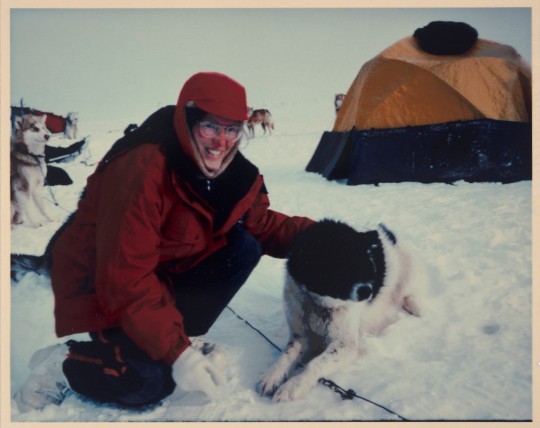
Dr. Claire Parkinson's love of math blossomed into a passion for climate science. Inspired by the Moon landing, and the fight for civil rights, she pursued a graduate degree in climatology. In 1978, her talents landed her at Goddard, where she continued her research on sea ice modeling. But Parkinson's impact goes beyond theory. She began analyzing satellite data, leading to a groundbreaking discovery: a decline in Arctic sea ice coverage between 1973 and 1987. This critical finding caught the attention of Senator Al Gore, highlighting the urgency of climate change.
Parkinson's leadership extended beyond research. As Project Scientist for the Aqua satellite, she championed making its data freely available. This real-time information has benefitted countless projects, from wildfire management to weather forecasting, even aiding in monitoring the COVID-19 pandemic. Parkinson's dedication to understanding sea ice patterns and the impact of climate change continues to be a valuable resource for our planet.
Make sure to follow us on Tumblr for your regular dose of space!
#NASA#space#tech#technology#womens history month#women in STEM#math#climate science#computer science
2K notes
·
View notes
Text
41K notes
·
View notes
Text
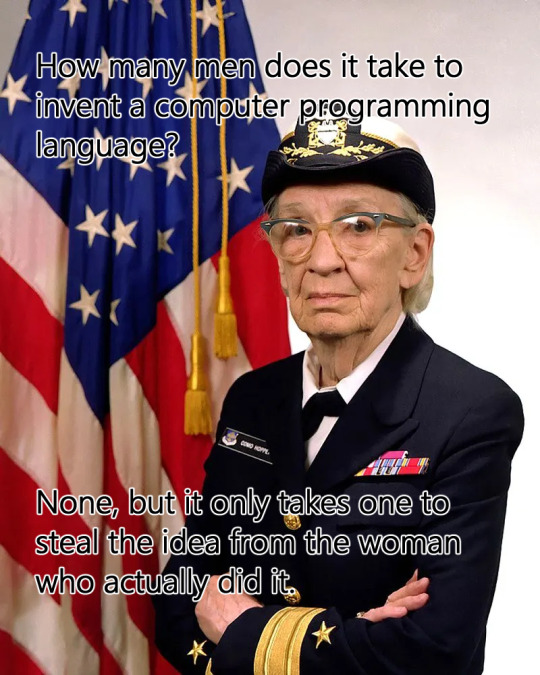
This woman is Dr. Grace Murray Hopper. She created the first computer language compiler tools to program the Harvard Mark I computer. This computer was used in WWII after 1944. John von Neumann initiated the computer's first program, but Hopper invented the codes
2K notes
·
View notes
Text
On today's episode of woman of science who didn't get the recognition they deserved:
Maria Sybilla Merian
a woman of art and adventure
after watching an insect documentary with my grandma (as one does) i wondered how, when & who tf discovered caterpillars and butterflies are the same animal.
okay so, i still don't actually know when it got scientifically/generally accepted, although (or should i say because ?) a painter and self-taught naturalist called Maria Sybilla Merian discovered it in the 16 hundreds.
now there's multiple circumstances from back in the day making this pretty special:
women couldn't pursue academic careers. as previously mentioned, she was a painter
knowledgeable women were still burned as witches, in a way her curiousity was kind of dangerous
science was still prettymuch in its fetus era, people didn't even agree on whether life *appears* or can only stem from pre-existing life
regarding point 3, "life appearing" means people thought flies emerge from meat, insects from dirt, and my favourite: frogs from the rain. thus, her discovery of the butterflies life cycle was much more then just that, bc it was proof life comes from pre-existing life
As a painter, Maria Sybilla Marian painted lots of butterflies. however, she was way more dedicated of most of her peers who used dead ones as a reference. instead she collected and somewhat held them as pets, allowing her to observe them and their life cycle. She used her discoveries to accurately depict not only the butterflies but also their life cylcle, and how they interact with their surroundings.
To learn even more about them, she went on an expedition (not quite common back then) to what is now known as Suriname. As she was a woman and therefore not good enough to be supported in her doings, she worked with enslaved people of Suriname (colonialised by the dutch). they would collect insects for her and would share their knowledge about the local plants etc (for example about the plant they used for abortions). Marian wrote a book about her discoveries in Suriname, called metamorphosis insectorum surinamensium, popular in scientific as well as artistic circles.
however, by the 18hundreds, her work was disregarded as non scientific, because
she was a woman
she received help from poc
by then biology was done by academics, the work of self trained naturalists like her was somewhat disregarded
her work was handwritten, and overtime changed by people, who made colours brighter and added imaginary insects, making it ineligible
some of her (very much accurate) discoveries sounded too fantastical
Marian was now no longer seen as a revolutionary naturalist, but merely a (brilliant) painter with a blooming fantasy.
which makes me pretty sad, personally.
:]
source: (x)
0 notes
Text
why neuroscience is cool
space & the brain are like the two final frontiers
we know just enough to know we know nothing
there are radically new theories all. the. time. and even just in my research assistant work i've been able to meet with, talk to, and work with the people making them
it's such a philosophical science
potential to do a lot of good in fighting neurological diseases
things like BCI (brain computer interface) and OI (organoid intelligence) are soooooo new and anyone's game - motivation to study hard and be successful so i can take back my field from elon musk
machine learning is going to rapidly increase neuroscience progress i promise you. we get so caught up in AI stealing jobs but yes please steal my job of manually analyzing fMRI scans please i would much prefer to work on the science PLUS computational simulations will soon >>> animal testing to make all drug testing safer and more ethical !! we love ethical AI <3
collab with...everyone under the sun - psychologists, philosophers, ethicists, physicists, molecular biologists, chemists, drug development, machine learning, traditional computing, business, history, education, literally try to name a field we don't work with
it's the brain eeeeee
#my motivation to study so i can be a cool neuroscientist#science#women in stem#academia#stem#stemblr#studyblr#neuroscience#stem romanticism#brain#psychology#machine learning#AI#brain computer interface#organoid intelligence#motivation#positivity#science positivity#cogsci#cognitive science
965 notes
·
View notes
Text
Katherine Johnson: The Mathematician Who Launched Astronauts into Space and Women into STEM 🚀👩🚀

In the vast expanse of the cosmos, where men first dreamed of reaching the stars, Katherine Johnson calculated the path that would get them there. This story isn't just about trajectories and orbits; it's about a woman whose brilliance in mathematics helped break the barriers of space and gender.

Johnson's journey began in White Sulphur Springs, West Virginia, where her curiosity and intelligence shone from an early age. Despite encountering segregation and sexism, she charted a course that would lead her to NASA, where her skills became indispensable to the success of the U.S. space program. Her calculations were critical to the success of the Mercury missions, including John Glenn's pioneering orbital flight, for which he specifically requested Johnson verify the computer's numbers. "If she says they're good," Glenn said, "then I'm ready to go."

But Johnson's contributions went beyond Mercury. She also played a role in the Apollo missions, including the first lunar landing, and her work on orbital mechanics laid the groundwork for the Space Shuttle program and plans for a Mars mission.

Her legacy is a beacon for women and people of color in STEM, symbolizing the power of intelligence and perseverance to overcome societal constraints. Johnson's story teaches us that the path to the stars is paved with determination, hard work, and an unwavering belief in one's own abilities.

Katherine Johnson's calculations helped lead humanity to the moon, but her impact extends far beyond the numbers. She charted a course for future generations of women in STEM, proving that the sky is not the limit—it's just the beginning. As we look up at the stars, we remember her legacy, not just as a mathematician, but as a trailblazer who launched us into a new era of exploration and equality.
#PiDay#KatherineJohnson#Katherine Johnson#NASA#Mathematics#National Archives#Women's History Month#HERstory#Archives#Apollo13#Mercury#STEM#Women in STEM#Science
501 notes
·
View notes
Text
wanna see the smallest frog i’ve ever found?


Feast thine eyes upon him!!
(Crinia signifera metamorph)
#i only saw him cos there was a large ant next to him and i saw the ant#this one only just became a frog#still though the adults are very small#tiny#frog#herpetology#science#zoology#amphibia#very cute#very important#like all frogs#he is likely to commit crimes#particularly arson#metamorphosis#biology#women in stem
1K notes
·
View notes
Text
leaving a three hour lab be like:
what time is it? why is it dark outside? where did the sun go?
I'm starving.
I'm never doing that again (literally has the same lab scheduled the following week).
#women in stem#chemistry#organic chemistry#biology#microbiology#stem#college#premed#physics#prevet#science#lab
1K notes
·
View notes
Text

Euphoria
#art#cyberpunk#cyber punk#afrofuturism#afro futurism#anime#afro fantasy#street art#afro futuristic#black women are beautiful#afrofantasy#afro anime#afrofuturistic#digital art#retro science fiction#retro futurism#cosmic#astrology#fashion#street wear
1K notes
·
View notes
Text
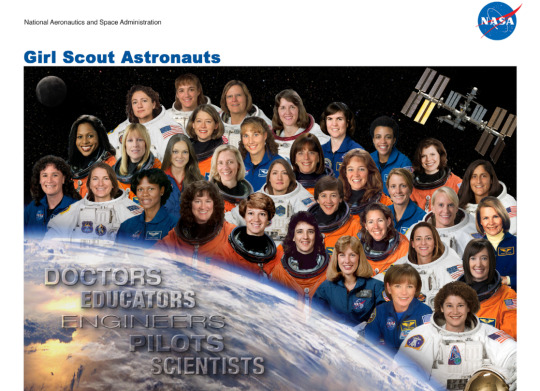
It’s Girl Scout Day! March 12, 2024, is the 112th birthday of Girl Scouts in the United States, and to celebrate, we’re sharing a lithograph of the Girl Scout alumnae who became NASA astronauts.
Girl Scouts learn to work together, build community, embrace adventurousness and curiosity, and develop leadership skills—all of which come in handy as an astronaut. For example, former Scouts Christina Koch and Jessica Meir worked together to make history on Oct. 18, 2019, when they performed the first all-woman spacewalk.
Pam Melroy is one of only two women to command a space shuttle and became NASA’s deputy administrator on June 21, 2021.
Nicole Mann was the first Indigenous woman from NASA to go to space when she launched to the International Space Station on Oct. 5, 2022. Currently, Loral O’Hara is aboard the space station, conducting science experiments and research.
Participating in thoughtful activities in leadership and STEM in Girl Scouts has empowered and inspired generations of girls to explore space, and we can’t wait to meet the future generations who will venture to the Moon and beyond.
Make sure to follow us on Tumblr for your regular dose of space!
#NASA#space#space exploration#Girl Scouts#adventure#explore#inspiration#inspirational women#Womens History Month#WHM#science#STEM#women in STEM#women in science#International Space Station#ISS#astronaut#tech#technology
2K notes
·
View notes
Text
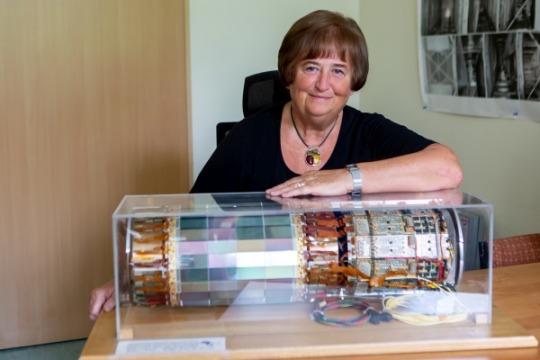
This is Professor Agnieszka Zalewska.
She specialises in particle physics. She received her doctorate in 1975 from the Jagellonian University in Krakow, Poland, for work carried out on bubble chamber data from an experiment at CERN. Later, she worked on the DELPHI experiment at CERN's Large Electron Positron collider, LEP, where she played an important role in the development of silicon tracking detectors. Since 2000, she has been involved with neutrino physics through the ICARUS experiment at Italy's Gran Sasso National Laboratory, which studies a neutrino beam sent through the Earth from CERN, and has also been involved with feasibility studies for an underground laboratory in Poland.
She was the first woman to be elected President of CERN Council (2012). She was also the first scientist from Central and Eastern Europe.
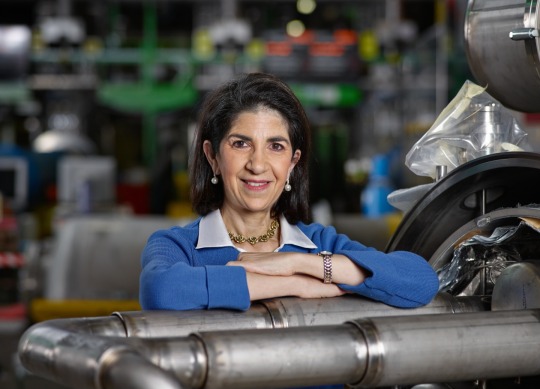
Also, let's not forget that today, CERN is led by a woman. Professor Fabiola Gianotti became the first woman elected Director General of CERN (2016). She was renewed for the second term of office in 2021.
#I saw something today and had to do this#it's always good to spread my agenda#physics#science#women
668 notes
·
View notes
Text

half life vr but the ai are all women
#hlvrai#half life vr but the ai is self aware#benrey#gordon freeman hlvrai#hlvrai bubby#harold coomer#tommy coolatta#science team#gabuart#noen of this would have happened ifnthey were women#JUST KIDDING. yes it would jave.
939 notes
·
View notes
Text
It took about two hours for Daina Taimina to find the solution that had eluded mathematicians for over a century. It was 1997, and the Latvian mathematician was participating in a geometry workshop at Cornell University. David Henderson, the professor leading the workshop, was modelling a hyperbolic plane constructed out of thin, circular strips of paper taped together. 'It was disgusting,' laughed Taimina in an interview.
A hyperbolic plane is 'the geometric opposite' of a sphere, explains Henderson in an interview with arts and culture magazine Cabinet. 'On a sphere, the surface curves in on itself and is closed. A hyperbolic plane is a surface in which the space curves away from itself at every point.' It exists in nature in ruffled lettuce leaves, in coral leaf, in sea slugs, in cancer cells. Hyperbolic geometry is used by statisticians when they work with multidimensional data, by Pixar animators when they want to simulate realistic cloth, by auto-industry engineers to design aerodynamic cars, by acoustic engineers to design concert halls. It's the foundation of the theory of relativity, and thus the closest thing we have to an understanding of the shape of the universe. In short, hyperbolic space is a pretty big deal.
But for thousands of years, hyperbolic space didn't exist. At least it didn't according to mathematicians, who believed that there were only two types of space: Euclidean, or flat space, like a table, and spherical space, like a ball. In the nineteenth century, hyperbolic space was discovered - but only in principle. And although mathematicians tried for over a century to find a way to successfully represent this space physically, no one managed it - until Taimina attended that workshop at Cornell. Because as well as being a professor of mathematics, Taimina also liked to crochet.
Taimina learnt to crochet as a schoolgirl. Growing up in Latvia, part of the former Soviet Union, 'you fix your own car, you fix your own faucet - anything', she explains. 'When I was growing up, knitting or any other handiwork meant you could make a dress or a sweater different from everybody else's.' But while she had always seen patterns and algorithms in knitting and crochet, Taimina had never connected this traditional, domestic, feminine skill with her professional work in maths. Until that workshop in 1997. When she saw the battered paper approximation Henderson was using to explain hyperbolic space, she realised: I can make this out of crochet.
And so that's what she did. She spent her summer 'crocheting a classroom set of hyperbolic forms' by the swimming pool. 'People walked by, and they asked me, "What are you doing?" And I answered, "Oh, I'm crocheting the hyperbolic plane."' She has now created hundreds of models and explains that in the process of making them 'you get a very concrete sense of the space expanding exponentially. The first rows take no time but the later rows can take literally hours, they have so many stitches. You get a visceral sense of what "hyperbolic" really means.' Just looking at her models did the same for others: in an interview with the New York Times Taimina recalled a professor who had taught hyperbolic space for years seeing one and saying, 'Oh, so that's how they look.' Now her creations are the standard model for explaining hyperbolic space.
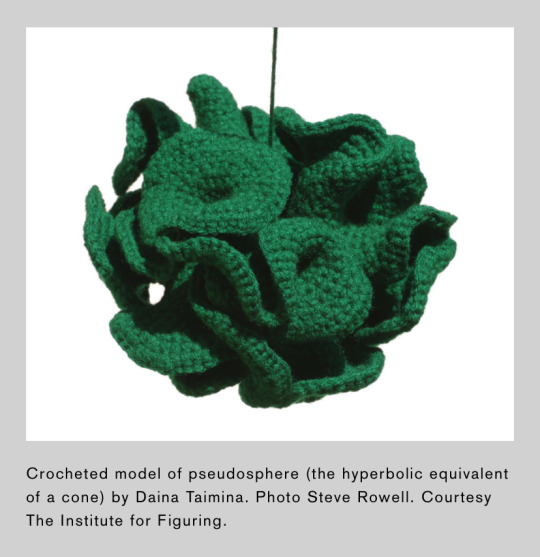
-Caroline Criado Perez, Invisible Women
Photo credit
#caroline criado perez#Daina Taimina#women in stem#women’s history#women in science#crochet#crocheting#female mathematicians#hyperbolic space
241 notes
·
View notes